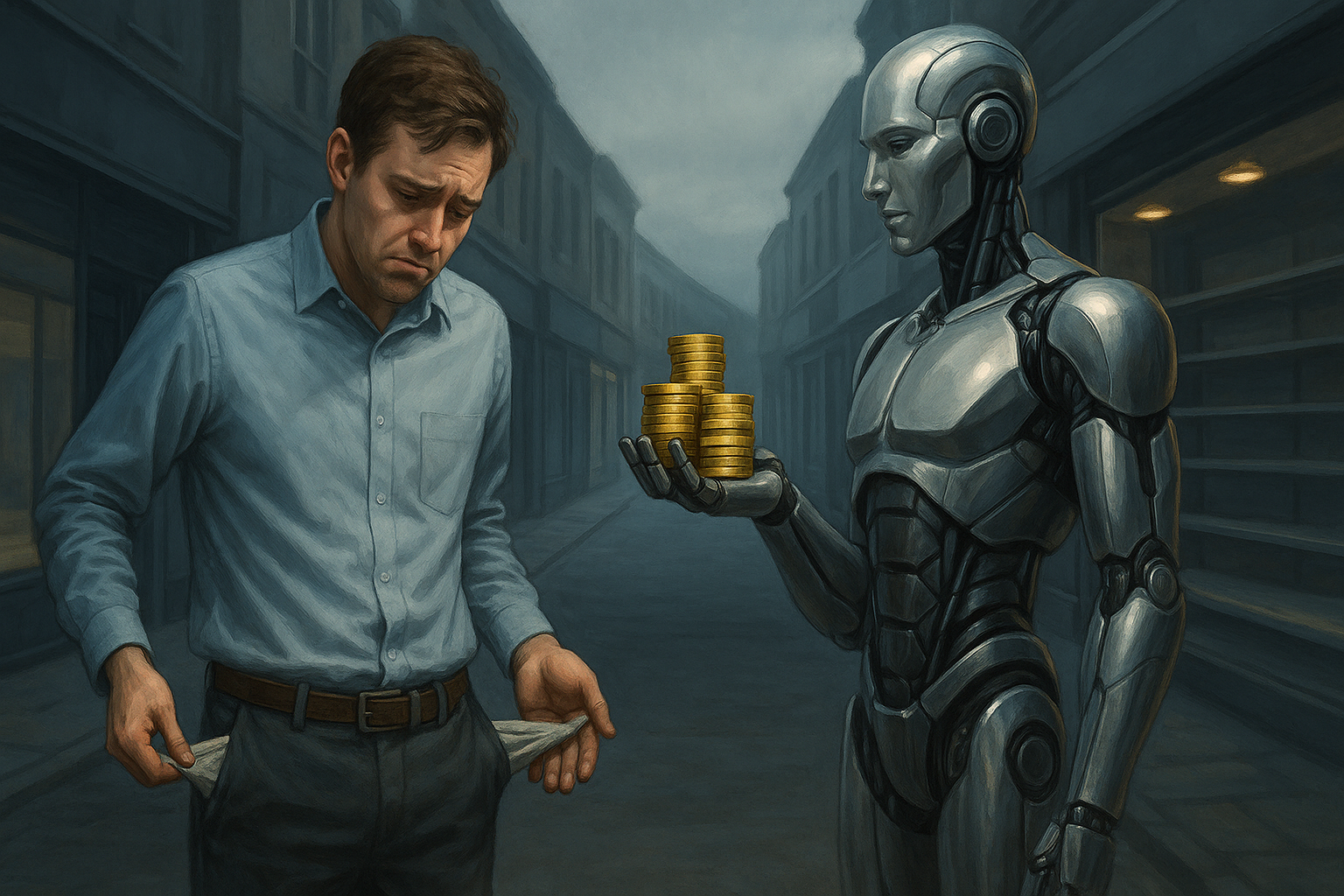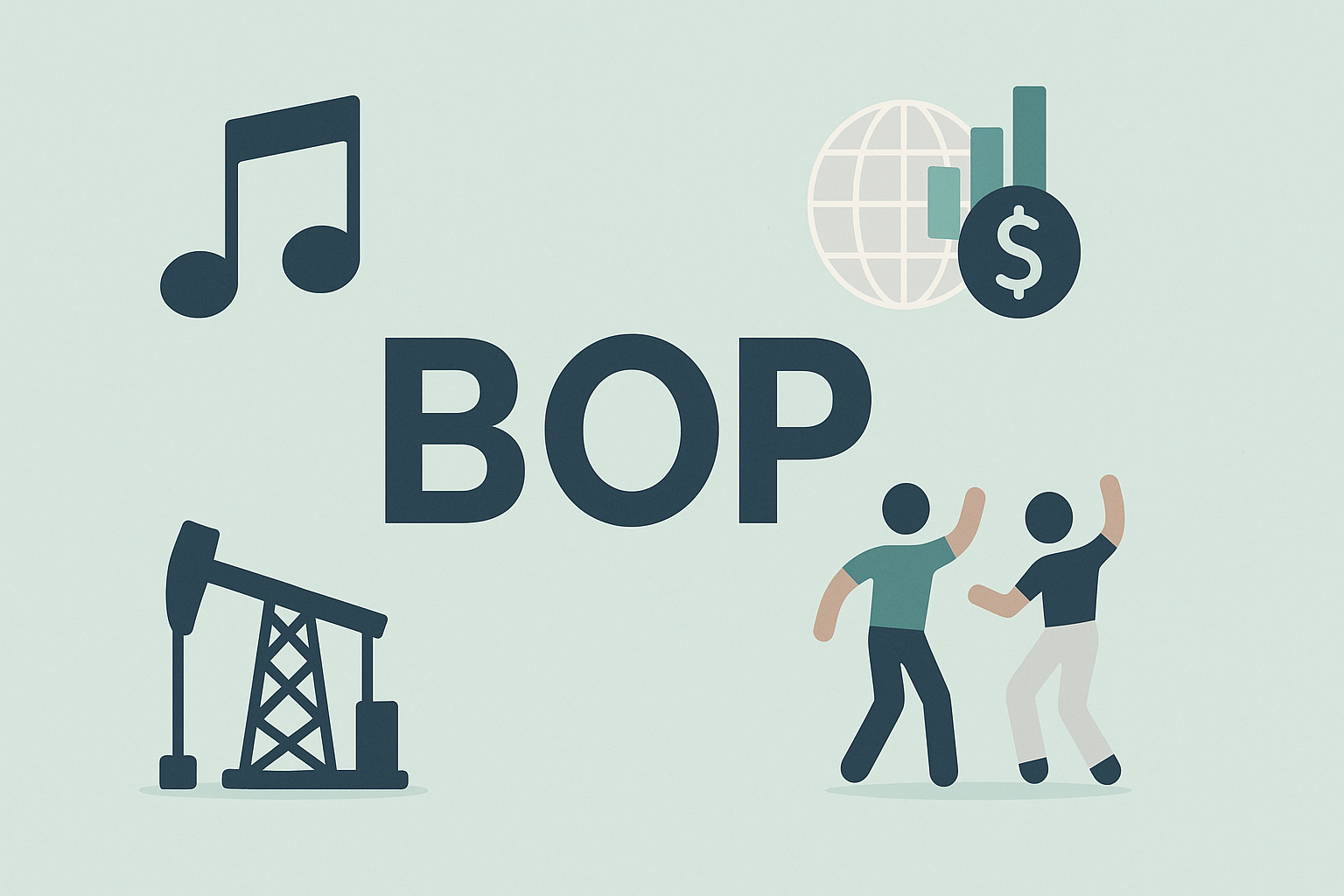The bean counters at Goldman Sachs dropped a bombshell last week—revising their AI impact numbers to suggest a staggering 300 million jobs worldwide could be touched by automation in the next decade. Not to be outdone, BlackRock's latest investor letter kept mentioning "structural workforce transitions"—corporate-speak that basically means "sorry about your career."
It's got me thinking about a question that's been nagging at me during every tech investment panel I've moderated lately: If AI swallows jobs whole, who's left with enough cash to buy anything?
The standard line about AI and economic markets goes something like this: Sure, we'll have some painful job losses now, but eventually productivity skyrockets, new industries emerge, and we all end up richer. After all, we don't see armies of unemployed horse-and-buggy manufacturers roaming the streets today. Everyone adapted. Markets soared. Life went on.
But this time feels... different.
The scale and speed of what's happening isn't like the slow decline of agricultural jobs over decades. It's more like trying to change your clothes while riding a motorcycle. At night. In the rain.
Two Futures for Your Portfolio
I see this playing out in one of two ways for investors.
In the first scenario—let's call it the "Everything's Actually Fine" model—AI dramatically boosts corporate profits and productivity. New job categories pop up (AI supervisors, robot therapists, virtual reality architects). People still spend money, just on different stuff. Markets keep climbing, though the winners (tech, healthcare) and losers (traditional retail, transportation) become painfully obvious.
Then there's the second path—what I think of as the "Hollow Economy" future. Here, jobs disappear faster than new ones materialize. Wages flatline for most workers. Spending power concentrates among a tiny sliver of the population. Consumer demand—which, let's remember, powers about 70% of America's economy—structurally weakens.
Look, markets can ride the productivity wave for a while. Share buybacks can juice stock prices. But eventually, simple math catches up. You can't sell products to people who can't afford them, no matter how efficiently your AI makes those products.
When Nobody Can Afford Your Stuff
I'm not usually the guy at dinner parties bringing up wealth inequality (nothing kills the mood faster than economics after the second cocktail). But when we're talking about long-term market health, distribution absolutely matters.
The post-WWII economic boom wasn't just about technological advances—it was built on widely shared prosperity. The middle class had money to spend! They bought houses. Cars. Refrigerators. Eventually, plastic junk their grandparents never imagined needing.
If AI concentrates economic benefits primarily among those who already own the robots and algorithms, markets face a fundamental problem: maintaining consumer demand with fewer consumers who actually have disposable income.
I was grabbing coffee with a hedge fund manager last month who shrugged this off. "The rich will just buy more stuff," he said between sips of his $7 latte.
But there's a limit to how many yachts even Jeff Bezos needs. Consumer markets thrive on millions of purchasing decisions, not a few big spenders with unlimited budgets.
How the Smart Money is Playing This
So how are serious investors positioning themselves? I'm seeing several approaches:
The Tech Monopoly Bet: Heavy investment in companies building and controlling AI infrastructure (the usual suspects—NVIDIA, Microsoft, Google, Amazon). The theory: these companies capture most of the economic value regardless of how badly the job market fractures.
The "New Work" Portfolio: Focusing on companies helping people transition to whatever jobs remain—education tech, reskilling platforms, remote work tools, and gig economy players.
The Necessities Play: Betting on industries with inelastic demand. People need healthcare, housing, and food no matter what. These sectors might not be sexy, but they're stable when everything else goes haywire.
The Policy Hedge: Positioning for potential government responses to mass job displacement—whether that's universal basic income (bullish for consumer basics and cheap entertainment) or massive infrastructure spending (materials, construction, green energy).
The Barbell Consumer Strategy: Simultaneously investing in luxury goods for the winners and discount retailers for everyone else. The middle market? Dead zone.
The smartest investors I know aren't putting all their chips on just one of these approaches—they're building portfolios incorporating elements of several, adapting as we see how this revolution actually unfolds.
The Money Velocity Problem Nobody Talks About
There's another factor that doesn't get enough attention in these discussions: how quickly money moves through the economy. Even if total wealth increases, if that wealth circulates more slowly (as happens when it concentrates), overall economic activity can stagnate.
A middle-class family typically spends most of their income, creating demand that supports jobs throughout the economy. The ultra-wealthy? They can only eat so many meals or wear so many shoes. Their excess capital flows into assets rather than goods and services.
This is how you get asset inflation and consumer spending stagnation simultaneously—a disconnect between financial markets and the "real economy" that, frankly, we've been seeing for years already.
So... Are We Doomed?
Will AI-driven job losses tank markets long-term? I doubt it's that simple. Markets adapt. Companies innovate. Humans have an amazing knack for finding new ways to create value (and new things to blow money on).
But the transition will be bumpy, sector-specific, and heavily influenced by policy choices we've barely started to debate. The last century taught us that broad prosperity and bull markets go hand-in-hand. If AI undermines that foundation, investors will need to rethink some fundamental assumptions.
In the meantime, I'm watching consumer spending data like my retirement depends on it (because it does), paying close attention to the gap between luxury and discount retail performance. That spread might tell us more about our AI future than any number of white papers from Silicon Valley's self-appointed visionaries.
After all, markets can stay irrational longer than robots can keep you employed.
And that's the scariest thought of all.




